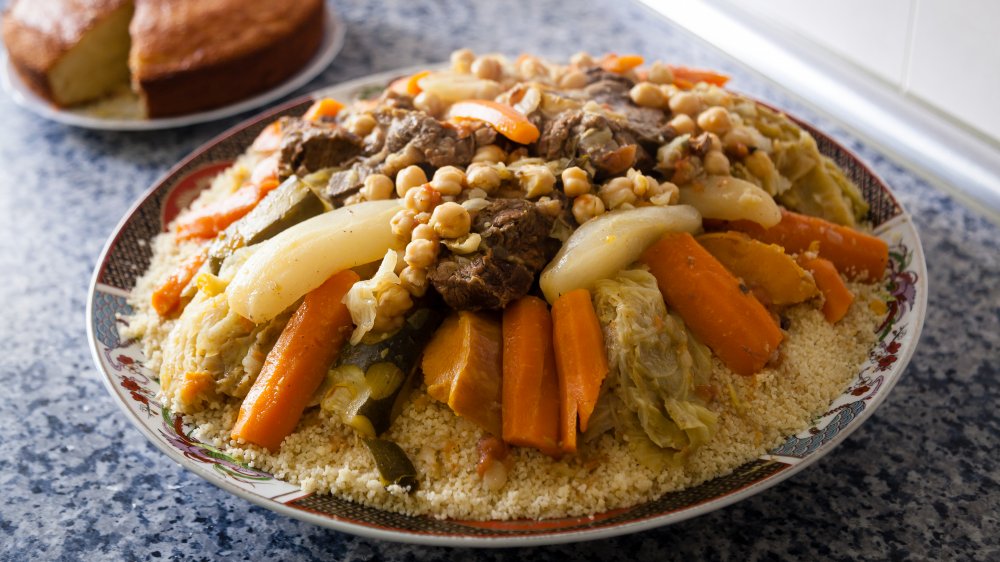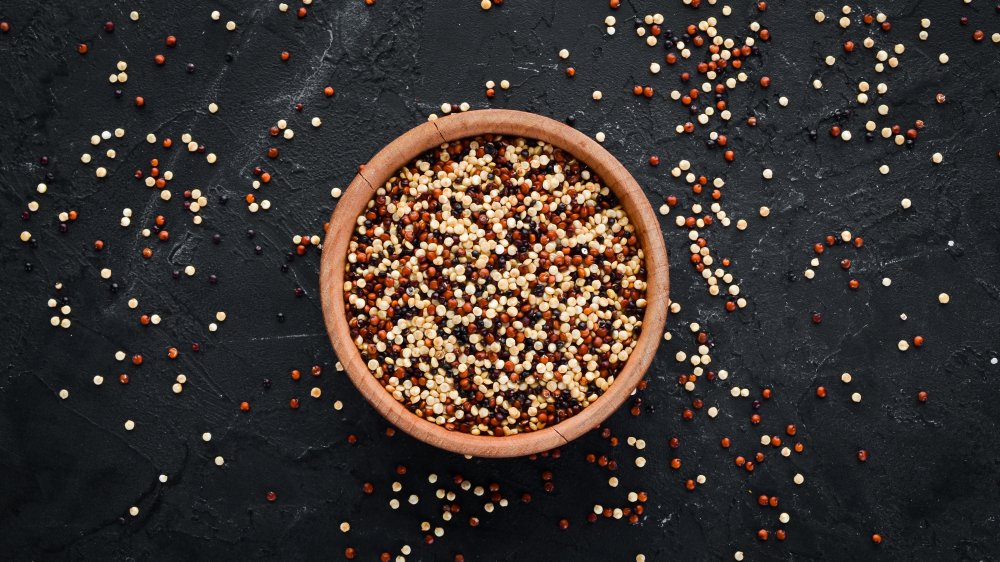The Real Difference Between Couscous And Quinoa
Quinoa and couscous are both great options to consider if you've gotten bored with rice and you're in search of a replacement, but that's pretty much where the similarities end. Couscous is a dish that hails from North Africa and is made out of tiny balls of durum wheat semolina (via Once Upon a Chef). As a result, this technically makes couscous a pasta instead of a grain, which it's often mistaken for.
Couscous can be used to add texture to a salad or as the main starch component in a meal. It's eaten for all meals of the day, but many Moroccan, Tunisian, and Libyan dinners revolve around a main stew dish (often a tagine) served atop couscous (via Fine Cooking). It's incredibly easy to prepare and can even be had as a breakfast dish if sweetened, perhaps with some fruit, cinnamon, nuts, and milk.
How quinoa differs from couscous
Quinoa, on the other hand, is a true grain. It comes from Peru and is a good grain option for people who can't consume gluten (via BBC True Food). Its usage goes back to the Incas who referred to the food as "mother grain." It's widely considered to be a superfood because it contains all eight of the essential amino acids, similar to animal-based protein — but without the animal source. It's also full of fiber, phosphorus, magnesium, and iron. It's easy to cook, easy to store, and can last for up to a year.
When quinoa became extremely popular in the United States and Europe a few years ago, there was something of an urban legend that began circulating. The thinking was that its newfound popularity put it out of the price range of Peruvians who rely on the dish as a staple. However, a study found that Peruvian farming communities actually benefitted from the rise in price and popularity (via NPR). The trouble is, however, that as they benefitted from its meteoric rise, but it can just as easily be a detriment if it loses popularity.

